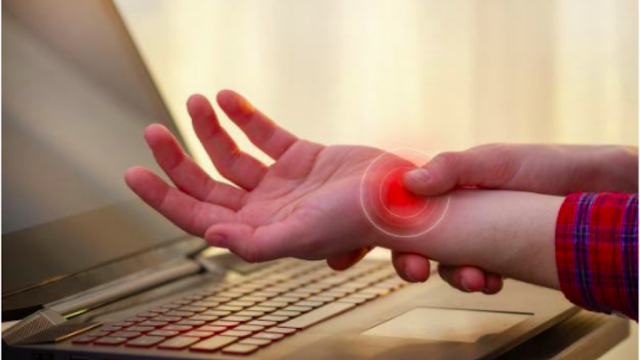Sciatica Physiotherapy Treatment and Exercises
Sciatica is a common condition in which the sciatic nerve is irritated and/or compressed, resulting in nerve pain in the leg. Sciatica is a condition that begins in the lower back, radiates deep into the buttocks, and spreads down the leg. It happens when the sciatic nerve is pinched, causing discomfort and inflammation. One of the most common causes of low back pain is a herniated disc. It's exhausting to have sciatica. It can have a negative impact on how the day looks and feels, making it difficult to work. A herniated disc can cause sciatica, which is easily treated.
Symptoms
Symptoms of sciatica are most often felt in the direction of the massive sciatic nerve. Sciatica is characterized by one or more of the following characteristics:
Pain: Sciatica pain is characterized by a burning sensation or a shooting pain that radiates from the lower back or buttock to the front or back of the leg, shoulder, and/or foot.
The sensation of numbness: Sciatica pain may be accompanied by numbness in the back of the leg. Tingling and/or fatigue are common side effects.
Symptoms that are just on one foot: One leg is typically affected by sciatica. The heaviness of the affected leg is a common symptom of the disease. 1 Rarely, both legs may be affected together.
Symptoms caused by poor posture: When sitting, attempting to stand up, leaning the spine forward, turning the spine, lying down, and/or coughing, sciatica symptoms can get worse. Running or applying a heating pad to the back of the pelvis may help ease symptoms.
Cause
Sciatica is caused by a pinched sciatic nerve, which is normally caused by a herniated disc on your back or a bone spur on one of your vertebrae. A tumor can compress the nerve, or it can be affected by a condition like diabetes.
Treatment
Sciatica Physiotherapy
A doctor or a physical therapist should devise a recovery regimen to help you avoid further complications after your intense pain has subsided. This usually entails workouts to increase your balance while also correcting your stance and strengthening the muscles that protect your back.
Physical Therapy for Sciatica - What to Expect:
The therapist will discuss your medical history, lifestyle patterns, and ask you questions about your sciatica experience during your first PT visit. He or she could inquire about the activity level before low back and leg pain developed, as well as when sciatica first appeared, whether an accident or specific event caused sciatic symptoms, and when sciatica first appeared.
Your physical therapist will then ask you to do a series of quick exercises to assess your range of motion, posture, reflexes, and coordination capacity. Bending side to side, flexing forward at the waist, extending backward, or twisting at the waist can be needed. The trainer is still watching you walk. This portion of the test gives your therapist a detailed evaluation of your current condition and how sciatica affects your physical capacity to perform everyday activities.
And, using what he or she learned from your assessment, your physical therapist creates an organized PT schedule for you. Your passive and active therapy program is tailored to meet your specific objectives. Your treatment schedule can be updated to include various types of stretches and exercises as your back and leg pain subsides and becomes more manageable.
Physical therapy, like many other treatment options, is not a simple fix and can take many weeks to achieve the desired results. Your recovery plan would most likely consist of a combination of appointment appointments with your physical therapist and an at-home workout.
Medications
The types of drugs that might be prescribed for sciatica pain include:
Anti-inflammatories
Muscle relaxants
Narcotics
Tricyclic antidepressants
Anti-seizure medications
Steroid injections
In certain circumstances, the doctor can prescribe a corticosteroid injection into the region around the affected nerve root. By reducing inflammation around the sore nerve, corticosteroids may help relieve discomfort. In most cases, the symptoms wear off after a few months. Since the chance of severe side effects increases when steroid injections are given too often, the number of injections you will get is restricted.
Surgery
When a compressed nerve induces severe fatigue, lack of bowel or bladder function, or discomfort that worsens or does not increase with most treatments, this is normally the only choice. The bone spur or the part of the herniated disc rubbing on the pinched nerve may be removed by surgery.
Complete sciatica treatment can be a very complicated process that should only be managed by a professional. However, this does not mean you cannot do anything to avoid the same and get relief from pain. You can follow these activities:
Exercise on a daily basis. Pay careful attention to your core muscles, which are the muscles in your abdominal and lower back that are responsible for proper balance and coordination, to keep your back solid. Inquire with your doctor about specific activities.
When you're sitting, make sure your stance is right. Choose a seat with a swivel foundation, armrests, and strong lower back support. To keep your back in its natural curve, place a pillow or folded towel in the small of your back. Maintain a level posture with the knees and hips.
Make full use of the body mechanics. If you have to stay for long stretches of time, take a break and rest one foot on a stool or a little box. Allow your lower extremities to do the job while lifting something heavy. Move up and down in a straight line. Maintain a straight back and just bend at the elbows. Keep the load as close to the body as possible. Lifting and spinning at the same time is not a good idea. If the object is bulky or difficult, find a lifting buddy.


Comments
Post a Comment